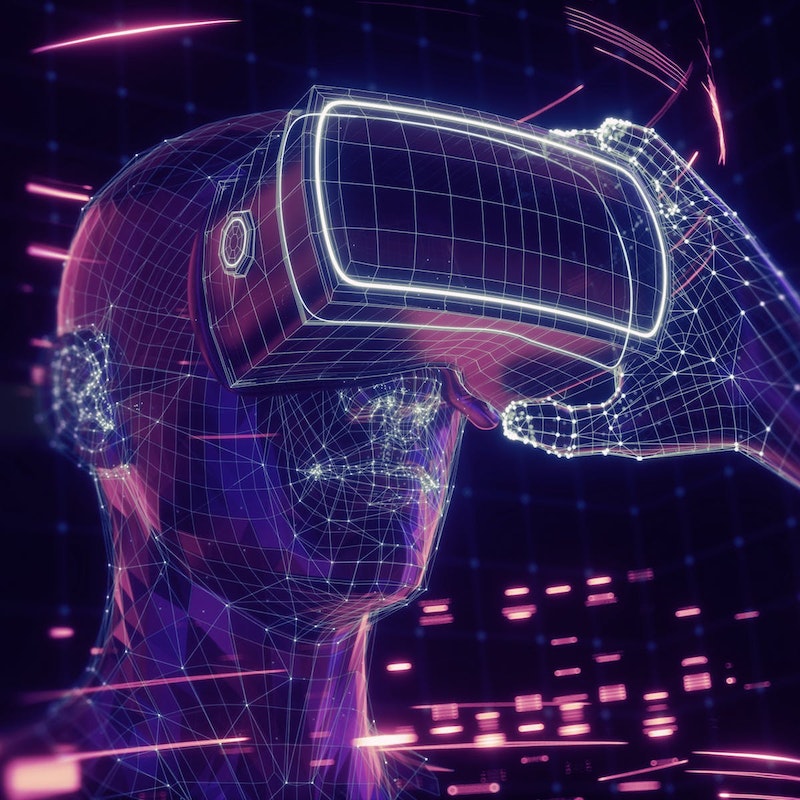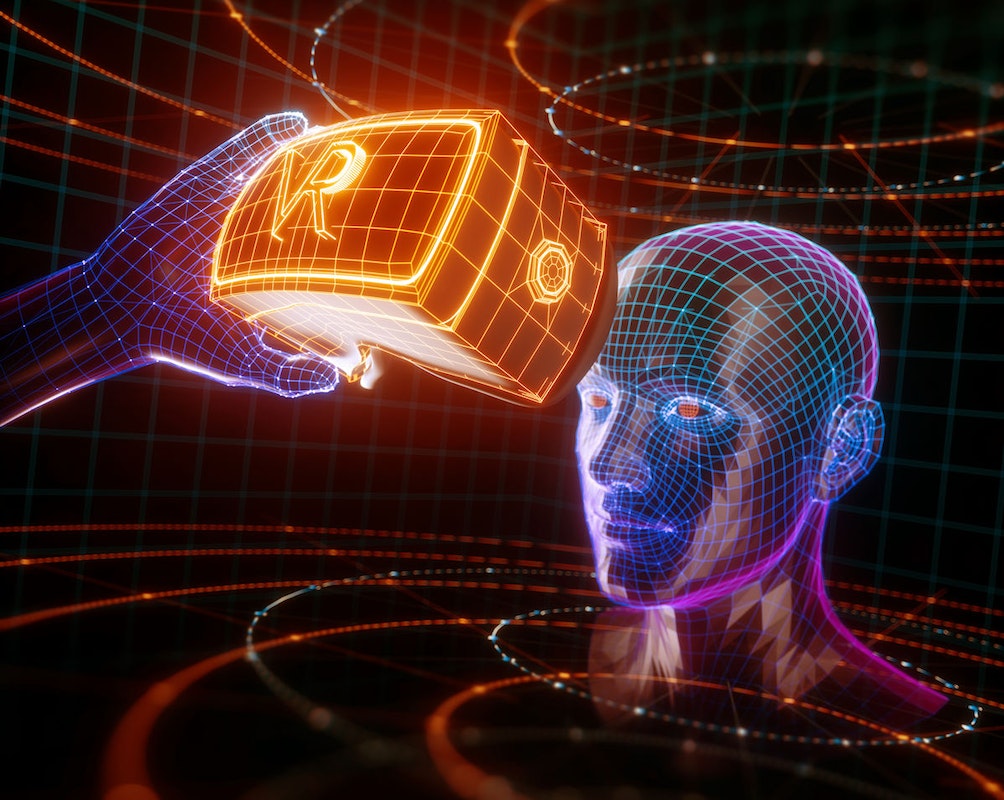The History of the Metaverse
06/05/2022
What if there was a place where you could be anyone you wanted to be? A place where your imagination was the only limit to what you could do?
That’s the Metaverse – a digital world that allows users to create and explore any reality they can imagine. From popular multiplayer games like Second Life to creative hubs like Pinterest and Instagram, the Metaverse is constantly expanding and evolving.
With new technologies making it easier than ever to create virtual worlds, the Metaverse is destined to become an even more important part of our lives. Learn all about its fascinating history in this post!
What is the metaverse and where did it come from?

The metaverse is a term coined by science fiction writer Neal Stephenson in his novel Snow Crash to describe a future version of the internet where people can interact with each other in a virtual reality environment.
The term has since been used by many others to describe a similar vision of a digital world where people can avatar into different characters and explore different environments.
Some popular examples of the metaverse include the Matrix movies, the OASIS in Ready Player One, and the virtual world of Second Life. While the idea of the metaverse has been around for decades, it has only recently become possible to create it, thanks to advances in technology.
There are currently several projects underway that are working to create a metaverse. Some of these include High Fidelity, Sansar, and Decentraland.
Each of these projects has created its own VR environment where users can create avatars and interact with each other by participating in activities like meeting up with friends, shopping for clothes, attending virtual events, and playing games.
Some of the more ambitious metaverse projects are working to combine different environments into a single metaverse that will allow users to travel between them all seamlessly. This type of metaverse would be very similar to how the internet works today, where you are able to visit any website no matter what browser you are using or what device you are on.
The hope is that we can start moving away from the current model where we each have our own separate digital worlds and instead begin to converge on a single virtual environment that everyone can experience together.
While creating a metaverse has been discussed as far back as the 1990s, it is only now becoming possible with advances in technology such as VR headsets, AI assistants like Alexa, and blockchain technologies.
The combination of these technologies has helped to spur the development of several different metaverse projects, leading us closer than ever to realizing this vision of a future internet where we all can interact together in a virtual reality environment.
Whether or not we will eventually succeed in creating the metaverse remains to be seen, but this is definitely an exciting time to watch all of these various projects unfold!
How has the metaverse evolved over time and what are its current features?
The metaverse has evolved as new technologies and ideas have been introduced into virtual worlds. The first virtual worlds were very primitive compared to modern VR experiences. They were text-based, had simple graphics, and did not allow for much interaction with other users.
Today’s metaverse platforms offer much more advanced features and capabilities. Many of these are the result of improvements in the technology used to create immersive experiences, such as head-mounted displays (HMDs), motion tracking systems, and 3D rendering techniques.
But there are also many unique capabilities that were specifically designed for virtual environments. Some of these include social tools like instant messaging, avatar customization options like skin tone/hair color customization, and in-world currency systems.
One of the most significant changes in the metaverse over time has been the introduction of user-generated content (UGC). In the early days of virtual worlds, all content was created by the platform providers themselves. This limited the types of experiences that were available, as well as how users could interact with each other.
With UGC, users can create their own content, ranging from simple 3D models to entire games and simulations. This has allowed for a much greater level of creativity and freedom in virtual environments. It has also made it possible for users to connect on a much deeper level, as they can now share their creations with the entire community.
The current state of the metaverse is very exciting, as there are many new and innovative platforms emerging. It is clear that the metaverse will continue to evolve, with new features and capabilities being added on a regular basis.
As the technology used to create virtual experiences continues to improve, we can expect the metaverse to become even more realistic and immersive. With all of the possibilities that are now available, the future of the metaverse is looking very bright indeed.
How will the metaverse impact our lives in the future?

The metaverse is expected to have a profound impact on our lives in the future. It will change the way we interact with each other and the world around us. We will be able to access information and services from anywhere in the world, and we will be able to connect with people from all over the globe in ways that are not possible today.
The metaverse will be a 3D, immersive world, and it will allow people to don their own avatar, or digital representation of themselves. People will be able to move around freely in the metaverse, and they will be able to interact with each other in real time.
The metaverse will open up new opportunities for business, education, and entertainment, transforming the way we live our lives.
For example, businesses might create virtual stores in the metaverse that allow customers to browse products online and make purchases without leaving their homes. Yes, everybody knows that online stores already exist, but imagine using VR technology to actually step inside an online store and interact with the people and products as if you were physically present!
In the realm of education, students might attend virtual classes in which they can interact with their professors and classmates as if they were all present in the same physical space.
The metaverse will also have a huge impact on entertainment. People will be able to take part in immersive games or experience travel across thousands of miles by virtually visiting locations around the globe.
In addition, the metaverse may become a platform for social networking, allowing people to keep up with friends and family members wherever they are located and whatever they are doing. With the metaverse, the possibilities are endless!
Chat with the expert NFT promoters and marketers at Mooning
Sure, all the examples of NFT promotions we listed are from global brands with endless coin to throw at their campaigns. But you really don’t need a crazy-high budget to see some seriously incredible outcomes – as long as you know the delicate intricacies of building a killer NFT marketing strategy!
If not, no worries – Mooning is here to take care of everything for you and make sure you see the most amazing ROI you’ve ever seen before. Our team has the knowledge and experience to promote your NFTs in order to deliver maximum awareness and interest, driving the sales prices up sky-high and beyond.
We provide a full suite of expert NFT marketing services and go above and beyond for every one of our clients to ensure only the best results. Our team will help with everything from minting, listing and selling, NFT creator sourcing, community management and campaign conceptualisation.
So get in touch with us now on 1300 818 435 or message us online.





